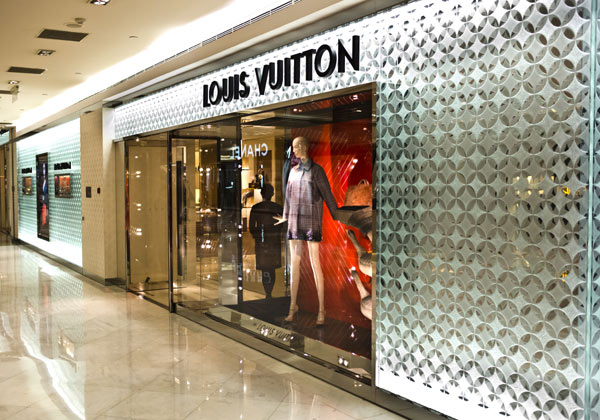Austerity drive among factors taking toll on luxury market
|
 According to a report by consultancy Bain & Co, Chinese shoppers now do about two-thirds of their luxury shopping abroad. The government campaign encouraging frugality has also had a huge impact on gift-giving, which was one of the major growth engines for the luxury sector. [Photo provided to China Daily] |
China's luxury goods market has slowed from 7 percent growth in 2012 to around 2 percent in 2013, with expectations of similarly slow growth in 2014, according to the China Luxury Goods Market Study by consultancy Bain & Co.
Chinese shoppers now do about two-thirds of their luxury shopping abroad, which has triggered a slowdown in domestic store traffic and store openings, the report said.
The Chinese are still the largest nationality of luxury buyers worldwide, with purchases making up 29 percent of the global market, a 4 percentage point increase over last year.
At the same time, consumption in China has shifted, with women's categories becoming more prominent, indicating a growing sophistication of Chinese customers.
These shifts are a continuation of trends that began at the end of 2012, and are creating new imperatives for brands as they retool their China operations, from pricing to customer relations to fashion content.
Several factors have generated the cooling of China's previously exuberant luxury market, according to the study. The highly visible government campaign encouraging frugality and focusing on corruption has had a huge impact on gift-giving, which was one of the major growth engines for the sector.
The campaign has especially constrained the growth of luxury watches and men's categories.
Watches make up more than one-fifth of the total domestic luxury market, and sales declined by 11 percent in 2013.
The shift of menswear from being a growth category in prior years to a slightly declining one in 2013 was also attributed to the reduction in gifting.
Cosmetics, perfume and the personal care category, a mainstay of China's domestic market that historically generated more than a quarter of all sales, also dropped from 15 percent growth last year to about 10 percent this year.
Bright spots, however, remain in women's categories.
Womenswear and shoes show strong momentum, with growth rates for the year ranging from 8 to 10 percent.
Much of this performance stems from women's increasing sophistication and influence, driving their share of luxury spending in China to equal men's by 2013 - a rapid evolution from 1995, when more than 90 percent of spending was done by men.
"China's luxury market has quickly changed from land-grab to a steady focus on consumer experience and 'like for like' sales," said Bruno Lannes, a Bain partner in China and lead author of the Chinese edition of the study.
"The mind-set among global brands here is changing from men's categories and accessories to women's categories and fashion. Brands are preparing for this major shift," Lannes said.
In light of the market evolution, store expansion is no longer enough to drive growth.
The number of new openings by global brands in China declined by one-third to roughly 100 last year from 150 in 2012 for the 20 brands involved in the study.
The new focus is renovation, relocation and operational improvement for domestic shoppers, as "like for like" sales were negative for most brands in 2013
Marketing and sales channels are quickly shifting as well. The study found that 73 percent of consumers use the Internet to get information about luxury goods before they buy.
The market also is greatly polarizing at the highest and lowest ends of the luxury products spectrum.
For example, in handbags, 25 percent of luxury brands' prices fall under 5,000 yuan ($826), while 33 percent top 20,000 yuan.


















